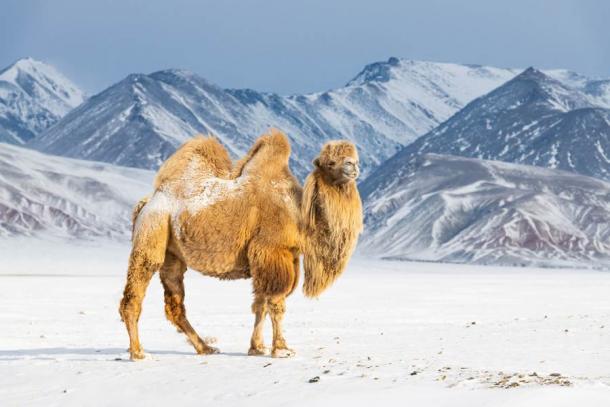A new report by an international team of researchers in the journal Frontiers in Earth Science has shown that the last of Mongolian giant camels may have coexisted with the much smaller wild Bactrian camel (Camel ferus) and ancient hominins until 27,000 years ago. And by ancient hominins the study suggests Homo sapiens and maybe also Neanderthals and Denisovans. According to the study, the extinct Camelus knoblochi, a shaggy giant camel with two humps, is “related” to the modern Bactrian camels, which includes its wild version (Camelus ferus) and the domesticated version (Camelus bactrianus). Mongolia was likely the last home of this giant camel before it went extinct, according to the study.
Co-author Dr John W. Olsen said, as reported in the Frontiers blog:
“C. knoblochi fossil remains from Tsagaan Agui Cave [in the Gobi Altai Mountains of southwestern Mongolia], which also contains a rich, stratified sequence of human Paleolithic cultural material, suggest that archaic people coexisted and interacted there with C. knoblochi and elsewhere, contemporaneously, with the wild Bactrian camel.”
Throughout the arid belts of Eurasia and Africa, camelids (dromedary camels, Bactrian camels, wild Bactrian camels, llamas, alpacas, vicuñas and guanacos) were crucial to human existence not only because of their transportation abilities but also the resources they provided in the form of milk, meat, leather, wool, bones, and dung.
Related posts:
Views: 0
 RSS Feed
RSS Feed
















 March 29th, 2022
March 29th, 2022  Awake Goy
Awake Goy 




 Posted in
Posted in  Tags:
Tags: 
















